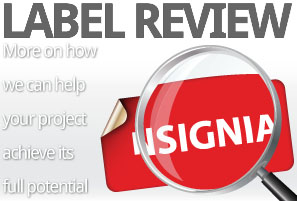Braille
The Braille system is a method that is widely used by people who are visually impaired to read and write, and was the first digital form of writing.
Braille was devised in 1825 by Louis Braille, a blind Frenchman. Each Braille character, or cell, is made up of six dot positions, arranged in a rectangle containing two columns of three dots each. A dot may be raised at any of the six positions to form sixty-four (26) possible subsets, including the arrangement in which no dots are raised. For reference purposes, a particular permutation may be described by naming the positions where dots are raised, the positions being universally numbered 1 to 3, from top to bottom, on the left, and 4 to 6, from top to bottom, on the right. For example, dots 1-3-4 (⠍) would describe a cell with three dots raised, at the top and bottom in the left column and on top of the right column, i.e., the letter m. The lines of horizontal Braille text are separated by a space, much like visible printed text, so that the dots of one line can be differentiated from the Braille text above and below. Punctuation is represented by its own unique set of characters.
The Braille system was based on a method of communication originally developed by Charles Barbier in response to Napoleon's demand for a code that soldiers could use to communicate silently and without light at night called night writing. Barbier's system of sets of 12 embossed dots encoding 36 different sounds was too difficult for soldiers to perceive by touch, and was rejected by the military. In 1821 he visited the National Institute for the Blind in Paris, where he met Louis Braille. Braille identified the two major defects of the code: first, by representing only sounds, the code was unable to give the orthography of the words; second, the human finger could not encompass the whole symbol without moving, and so could not move rapidly from one symbol to another. His modification was to use a 6 dot cell — the Braille system — representing all the letters of the alphabet.
At first the system was a one-to-one transliteration of French, but soon various abbreviations and contractions were developed, creating a system much more like shorthand. Braille is derived from the Latin alphabet, albeit indirectly. In Braille's original system, the points were assigned according to the position of the letter within the alphabetic order of the French alphabet, with diacritic letters sorted at the end.
The first ten letters of the alphabet, A–J, use the upper four dot positions, 1, 2, 4, 5: ⠁⠃⠉⠙⠑⠋⠛⠓⠊⠚. These also stand for the numerals 1–0 in a system parallel to Hebrew gematria and Greek isopsephy. (Though the dots are assigned in no obvious order, the first three letters and lowest numerals, ABC ~ 123 ⠁⠃⠉, and the vowels, AEI ⠁⠑⠊, have the fewest dots, whereas the even numerals 4680 are corners, ⠙⠋⠓⠚.)
The next ten letters, K–T, are identical to A–J, respectively, apart from the addition of a dot at position 3: ⠅⠇⠍⠝⠕⠏⠟⠗⠎⠞. The next ten letters are the same again, but with dots at both 3 and 6. Here W was left out as not being part of the basic alphabet; the order is U V X Y Z Ç É À È Ù ⠥⠧⠭⠽⠵⠯⠿⠷⠮⠾. The next ten, ending in W, are the same again, except that for this series only position 6 is used. These are Â Ê Î Ô Û Ë Ï Ü Ö W ⠡⠣⠩⠹⠱⠫⠻⠳⠪⠺. The A–J series lowered in dot space become punctuation: comma, semicolon, colon, period, (not used), exclamation point, parentheses, question mark, (not used), quotation marks: ⠂⠆⠒⠲⠢⠖⠶⠦⠔⠴. A and C, which only use the top row, were lowered two spaces for the apostrophe and hyphen: ⠄⠤. In addition, a few letters used upper-space patterns which are not letters by themselves: 4 (by itself the acute accent for letters other than É) with 3, 3-6, and 6 makes Ì, Ò, decimal point, ⠌⠬⠨; 4-5 with the same makes Ä, numeral sign, ellipsis: ⠜⠼⠸
Braille can be seen as the world's first binary encoding scheme for representing the characters of a writing system. The system as originally invented by Braille consists of two parts: A character encoding for mapping characters of the French language to tuples of six bits or dots.
A way of representing six-bit characters as raised dots in a Braille cell.
Today different Braille codes (or code pages) are used to map character sets of different languages to the six bit cells. Different Braille codes are also used for different uses like mathematics and music. However, because the six-dot Braille cell only offers 63 possible combinations (26 - 1 = 63), of which some are omitted because they feel the same (having the same dots pattern in a different position, e.g. ⠊ and ⠔), many Braille characters have different meanings based on their context. Therefore, character mapping is not one-to-one.
In addition to simple encoding, modern Braille transcription uses contractions to increase reading speed.
Braille may be produced using a slate and stylus in which each dot is created from the back of the page, writing in mirror image, by hand, or it may be produced on a Braille typewriter or Perkins Brailler, or produced by a Braille embosser attached to a computer. It may also be rendered using a refreshable Braille display.
Braille has been extended to an 8-dot code, particularly for use with Braille embossers and refreshable Braille displays. In 8-dot Braille the additional dots are added at the bottom of the cell, giving a matrix 4 dots high by 2 dots wide. The additional dots are given the numbers 7 (for the lower-left dot) and 8 (for the lower-right dot). Eight-dot Braille has the advantages that the case of an individual letter is directly coded in the cell containing the letter and that all the printable ASCII characters can be represented in a single cell. All 256 (28) possible combinations of 8 dots are encoded by the Unicode standard. Braille with six dots is frequently stored as Braille ASCII.
The first ten letters of the alphabet are formed using only the top four dots (1, 2, 4, and 5). Reminiscent of Greek numerals, these symbols also represent the digits 1 through 9 and 0[4] (preceded by the symbol [number follows]; [number follows]j also stands for 10, within context).[5] Adding dot 3 forms the next ten letters, and adding dot 6 forms the last six letters (except w) and the words and, for, of, the, and with. Omitting dot 3 from the letters U-Z and the five word symbols form nine digraphs (ch, gh, sh, th, wh, ed, er, ou, and ow) and the letter w.
Though Braille is thought to be the main way blind people read and write, in Britain (for example) out of the reported 2 million visually impaired population, it is estimated that only around 15-20 thousand people use Braille. Younger people are turning to electronic text on computers with screen reader software instead, a more portable communication method that they can also use with their friends. A debate has started on how to make Braille more attractive and for more teachers to be available to teach it.
The whole question of the use of Braille has increasingly come into the general consciousness, with the European Union creating legislation to help and protect the visually impaired. In the UK for example, over 2 million people have impaired vision and the majority of these are elderly, a demographic that will expand over the next 20 years. This group are prescribed nearly half of all prescription drugs so all new medicines must now come complete with Braille and a comprehensive manufacturers leaflet.
The use of Braille is also being expanded to cover lots of other aspects of visually impaired people's lives, with paper money starting to be made visually impaired friendly. In Canada their banknotes have a tactile feature consisting of raised dots that indicate the denomination, allowing bills to be easily identified by visually impaired people. It does not use standard Braille; rather, the feature uses a system developed in consultation with blind and visually impaired Canadians after research indicated that not all potential users read Braille.
This process has expanded to other countries such as Mexico, India and Israel who incorporate special raised symbols on their currency to make them identifiable by the visually impaired. Parliaments around the world have also started to publish legislation incorporating a Braille version and safety signage must also include Braille. Perhaps labelling of food and drink is the next area to incorporate Braille with some vineyards staring to include Braille on wine bottle labels. Clearly as Western populations age and their vision becomes impaired, it becomes more important that labelling and signage incorporated Braille to help and protect these people.





